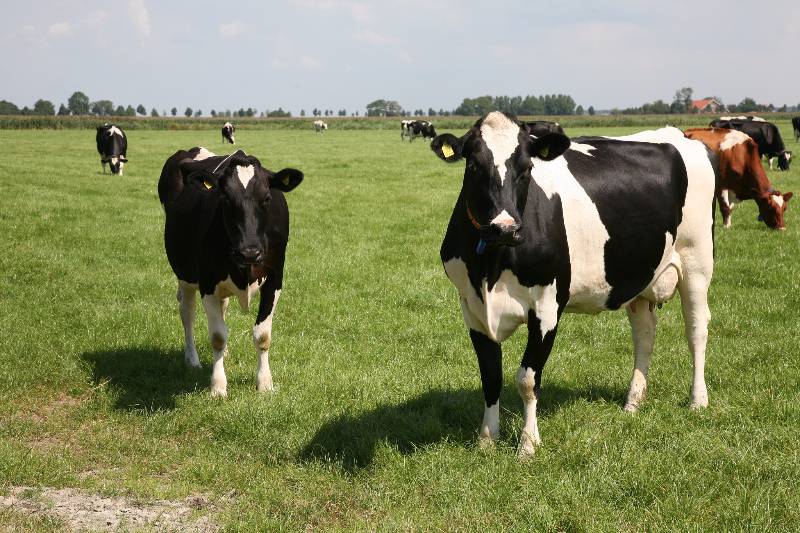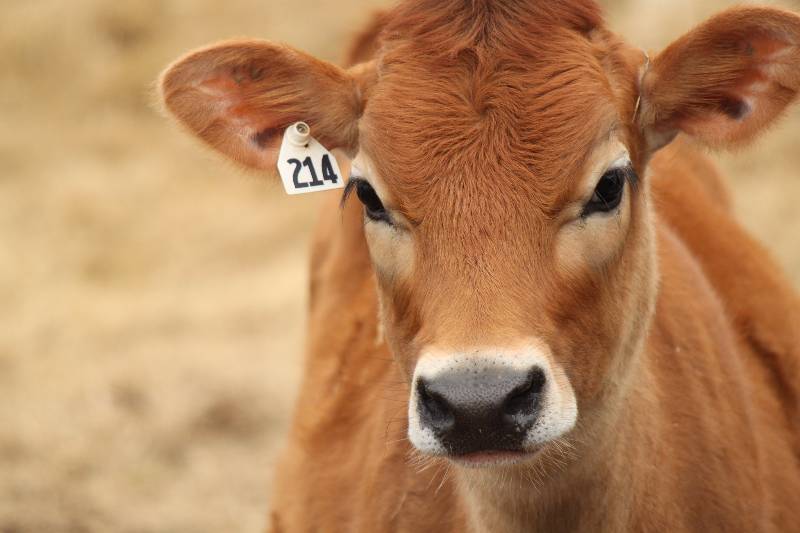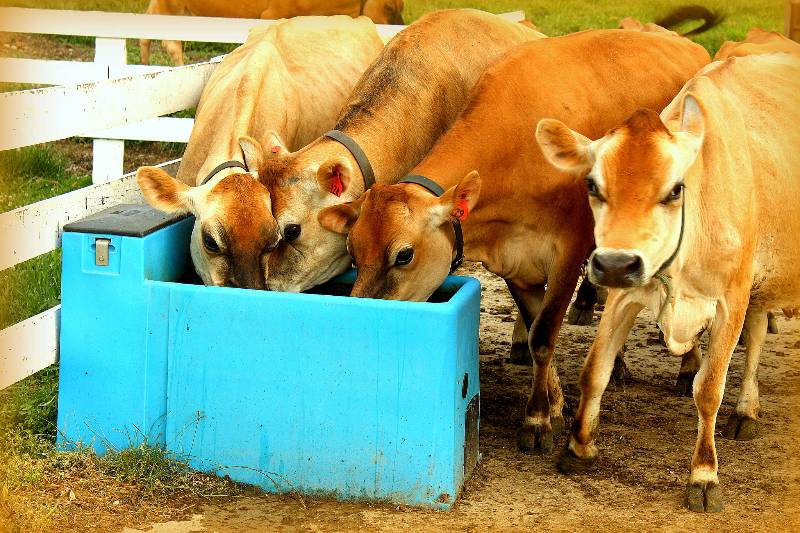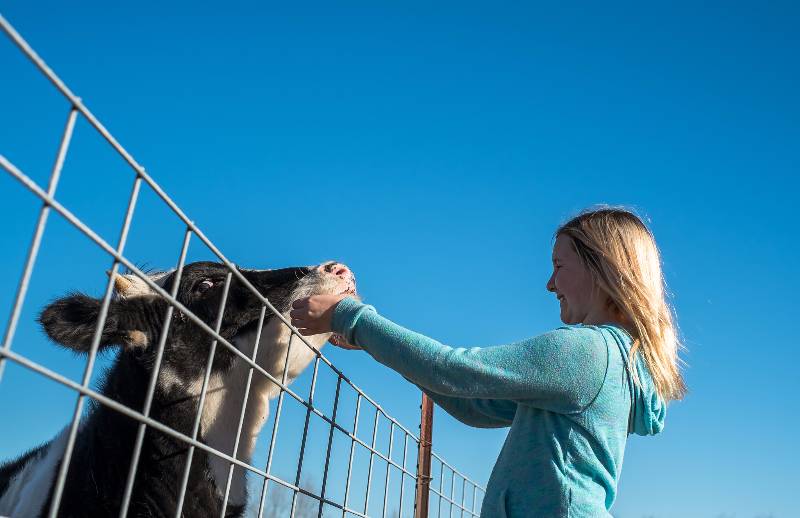20th January 2023
Milking it: A guide to increasing yield in dairy cows


Featured Image – © Bertknot – licence
It’s a difficult time to be a dairy farmer in the UK. Milk prices are being squeezed, putting livelihoods at risk. But farmers are fighting back.
Some are organising protests, others are harnessing alternative revenue streams, and many are looking to increase yields. In this guide, you’ll find plenty of helpful advice on boosting milk production — and therefore profits — on your dairy farm.
The falling price of milk has left the UK dairy industry in turmoil, with many small and medium dairy farmers being forced to close their businesses. The predicament is driven by competing supermarkets trying to offer consumers the best price, to the point where some were selling milk cheaper than water. Compounding the problem are the dairy processors, who are paying the farmers less for their produce as they try to preserve their own income after price drops on their products as well.
The problems in the dairy industry are not new. Over the past ten years, the price of milk has fallen at a steady rate, and the country has seen over half of its dairy farmers go out of business. This year has proven to be a crisis point, because prices are now so low that many farmers are earning less than it costs to maintain their cattle and produce the milk.
With large-scale protests from the NFU, Farmers for Action, and dairy farmers, as well as a spike in mainstream press coverage, the outcry over the issue has reached a new level.
With the issue very much at the forefront of the public’s attention, there has been increased pressure on the supermarkets to act, with many pledging to put in place a minimum price for milk. However, these prices are still low and barely cover the cost of production. It also remains to be seen if the dairy processors will share the extra income with dairy farmers.

As with any task, planning ahead will provide a better foundation for success and give you a higher chance of meeting your targets. Having a plan for your herd will ensure that you have covered all of the angles in advance, and will also allow you to prepare for any potential risks. Sit down with your staff and come up with a 12-month plan for your herd, taking into account calving, nutrition, dry periods, and a herd health and welfare plan.
As the owner of your dairy herd, you have the most significant influence over the health and welfare of your cows. You should draw up a written health and welfare plan with your herd’s vet and any other technical advisors. You should review and update this plan every year to ensure you are prepared for any new or emerging diseases or health hazards.
The plan should set out health and husbandry activities that cover the whole year’s cycle of production and should include provisions for the prevention, treatment and limitation of existing disease problems. The plan should also include provision to keep livestock records that will enable you to accurately monitor and assess the herd’s health and welfare.

If you are planning to open a new dairy business, or are looking to make changes to your current herd for optimum milk production, then choosing the right breed of dairy cow is very important. There are a number of factors to consider, such as how much milk you want, the breed of cow you can afford to keep, what your budget is, and what breeds are available in your area.
You might think that the answer to this question would be ‘as much as possible’, but there is not much point investing in high-yield cows if you do not have the space or infrastructure to handle the amount of milk produced. Before you make a decision on the breed of cow, evaluate your resources and estimate how much milk you could realistically process. Consider how much storage space you have and whether you will risk becoming overstocked. Will you be able to commence selling your product straight away to immediately clear some space?
Holstein Friesian cows are the most productive cows for milk, producing up to 45 litres a day. Consequently, they are the world’s most commonly kept cow. If you are looking to produce a lot of milk, this is the breed you should opt for. However, Holsteins are not without their drawbacks. They actually make poor foragers, and unless you have excellent pastures, the quality of the milk you will get from your Holsteins will be below par.
Obviously, different breeds of cow are different sizes. The larger the breed of cow, the more space you will need to keep them in and the more feed you will have to provide for them.
The amount of space required for larger breeds does not just apply to fields, but also to calving and milking sheds. This is something you should think about in advance, as extra work may have to be carried out on your facilities if you do not have the space for a larger breed. Larger breeds also require more feed than medium and small breeds, so there will be an additional cost incurred for feed and water.
Holstein Friesian cows are the largest breed of cow, and will require the most feed and space. Other breeds range in size and feed requirement. The smallest and most economical breed is the Jersey cow, which may be the best option for a dairy farm with limited space and a low feed budget. They also have a milk yield of 18–20 litres a day that offers more than some breeds that are larger and less economical. Other larger but relatively economical breeds include Guernsey (20–25 litres a day) and Ayrshire cows (22–30 litres a day).
A similar concern to the previous consideration, your budget will be a limiting factor as to which breed you can afford and how many cows will be in your herd. Before you select a breed, you should assess your finances, agree on a budget, and stick to it.
Cows that have been culled from other dairies will be cheaper, but may be more prone to health conditions, mastitis, or breeding problems. These are all issues that will affect the capability of your herd to produce the larger quantities of milk that you are targeting. If you are establishing a new dairy farm, it is advisable to avoid these cull animals.

This is perhaps the most important factor to consider when trying to increase the yield from your herd. The quality of the nutrients they are able to take in through eating will reflect the quality and quantity of the milk they produce, as well as the overall health of the cow.
There are several main requirements for the production of high-quality milk in cows: energy, protein, minerals, and water. Roughages like grass and hay provide the cellulose needed for energy, but lack the protein content required for a lactating dairy cow. For this protein boost, cows are provided with legumes, fodder trees, premixed feeds, or industrial by-products.
To ensure a sufficient intake of nutrients for both wellbeing and milk production, most dairy cows are given daily rations that control the amount of food that they eat. Cattle rations are a blend of all of the essential foodstuffs cows need, and the mixture is created with general health and lactation in mind.
There are various options available to you when it comes to providing your herd with the ideal ration. You can save money in the long-run by opting for a blend that makes use of home-grown ingredients, but your ability to take advantage of these self-made rations will depend on your level of nutritional expertise, the crop growing potential of your farm, and the timescale required before you need to feed your cattle. Many farmers who are limited by one or more of these factors can opt for a mix of home-grown and bought-in produce to create their rations, an option that, while not as cost-effective as a wholly home-grown ration, still offers the potential to cut costs of entirely bought-in feeds.
With the industry crisis and income at an all-time low for many dairy farmers, the prospect of saving money on feed by growing and mixing your own can be very appealing. If you wish to choose this option, make sure that you have sufficient knowledge to succeed in the task. If you are new to the process, research the subject to ensure your cattle will benefit from your feed. Following the advice in the food and nutrition planning section of this guide will make sure that you understand the nutritional needs of your herd.
The dry period is the most important stage of your cow’s lactation cycle. This is the period where your herd will prepare for lactation in advance of the calving season, and any problems during this key phase will negatively affect their health and milk production.
Mastitis is an inflammation reaction in a cow’s udder and it is most prevalent during the dry season, with 60% of cases originating during this time, according to studies carried out by the University of Kentucky. The disease is most common in dairy cows, and is extremely costly, as the milk production is severely inhibited. In some cases mastitis can prove fatal. For these reasons, your cows must be closely monitored, with preventative measures taken to safeguard them.
The udder is most susceptible to infection at the beginning and end of the dry period. These are the times before and after the cow’s teat is blocked by a keratin seal, which is their body’s self-defence system against bacterial infection. An intramammary antibiotic can help eliminate existing infections and prevent any new ones from developing in the first few weeks. Note: The effect of this treatment will not last the duration of the dry period.
In line with the planning stage discussed earlier, you should have closely monitored the vital statistics of your cows and put a plan in place with your vet for dry period treatment. Using the most recently taken measurements of your cattle, re-consult with your vet and review each cow’s treatment plan, adapting to any changes in health.
There are many other factors that you should consider for a successful drying off period:

© Anne Marie Peterson – licence
Taking care of your herd’s health and wellbeing is a key factor in attaining peak milk yield. If your cows are calm, happy, and in excellent health, you will have the best chance of reaching your targets. Below are a number of considerations that you should take into account when moving, housing, and caring for your cattle.
You may have followed these guidelines to successfully increase the yield of your herd, but you can still fall victim to poor quality or spoiled milk between the time of milking and transport from your farm. Here are some tips for making sure your milk stays at a high quality:
If you follow the advice in this guide, you will be at a great advantage when it comes to increasing the milk yield from your cattle. In the UK’s difficult dairy industry, being able to maximise your production will assist you in offsetting the low prices paid for milk and help you to sustain a profitable level of business from your farm.
With more people becoming aware of the dairy crisis and more pressure being exerted on supermarkets and dairy processors to provide better remuneration, the future is looking brighter for the country’s dairy farmers. By perfecting your practice and increasing your yield now, you can look forward to even more profitability when the price of milk begins to rise.